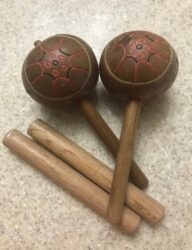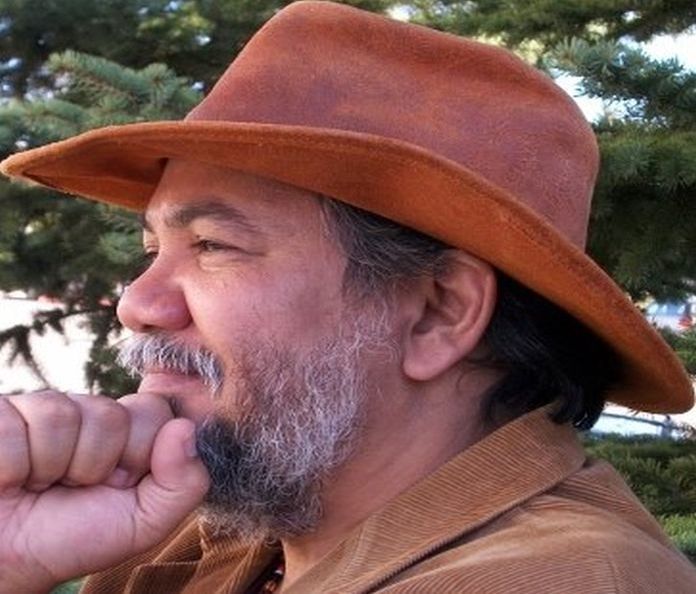By Johnny Coomansingh
Have you ever had a parang band visit your home at Christmas? If you didn’t, then there will be a great lack of joy and togetherness that a good parang session transfers.
What is Christmas without parang? Here’s one of my experiences: One o’clock Christmas morning I was “taken” from my home by some paranderos. As a good cuatro player; a parandero of sorts, I wasn’t given the chance to say no. Hitting several homes along the way we arrived in a tiny village located at Pinto Road, Arima. Here I was, stuck in the parang until 5:00 pm on Christmas Day. The people we entertained with our parang were jubilant and happy. Such an experience I will never forget. But what is parang anyway?
In light of Trinidad’s development, the Spanish crown ruled Trinidad until the year 1797. Spanish colonization concomitant with the enslavement of the Amerindians saw the cultivation of sugar cane, tobacco and animal husbandry on a small scale. During this era, Trinidad was basically a jumping-off point to the South American mainland. The South American mainland proved to possess deposits of precious metals and gems.
Nevertheless, under the French, the cocoa and coffee industries survived absorbing labor from the Spanish peons from Venezuela who imperceptibly transferred their culture to Trinidad, the parang artform being more prominent. By now most people in Trinidad recognize that parang is essentially a Spanish Roman Catholic musical artform. This article briefly examines parang and its accompanying traditions in the village of Lopinot, the most elevated village in Trinidad. With a population of about 3,000 people, Lopinot exhibits a complex mixture of descendants from Spanish (Cocoa Panyols), French, Portuguese, Chinese, West African, East Indian and Amerindian (Carib), most of whom follow the Roman Catholic way of life.
The term parang is derived from the Spanish word parranda, which means a spree or a fête. Initially, it’s a group of four or more men who went to give a parranda at an event – a christening or a birthday celebration.

(Photograph by author).
However, in Trinidad, parang came to mean the songs that were sung especially during the Christmas season.
What Venezuela brought to Trinidad was parranda navideña, which means Christmas parang. There are two theories about the origins of Trinidad parang.
The first is that the custom was brought to the island by Capuchin missionaries during the Spanish occupation of Trinidad from 1498-1797. The second theory suggests that the artform came from Venezuela in the 19th century with Cocoa Panyols who came from Oriente, Venezuela, to work on cocoa plantations in Trinidad. Whatever its origins, the infectious parang arrived as part of the cultural baggage of the Spanish. The art form is now an integral part of the cultural landscape of Trinidad and Tobago.
Sometimes many paranderos go paranging with just a cuatro, a pair of maracas (chacs-chacs), two tock-tocks, a box bass, and as I have seen in the village of Tamana, even a dholak. This type of parang liming occurs in several recognized towns and villages in Trinidad including Arima, Lopinot, Palo Seco, Rio Claro, San Raphael, Santa Cruz, Sangre Grande, Siparia, and Tamana. The official parang season begins on September 25 and continues to Les Rois on January 6.
Various parang groups participated in competitions organized by the National Parang Association of Trinidad and Tobago (NPATT) during this period. Nonetheless, there are paranderos who parang way past this closing date. Some years ago, in a little chat with a taxi driver whom I came to know only as “Mr Vialva,” I realized that he played parang music in his taxi every day of the year. When asked if people make a fuss about his constant paranging he said: “I doh care who vex ‘bout mih music. I like parang, and I will play the music all day, every day.”
In terms of gastronomic preferences for the parang season, there will be a lackluster session if the regular parang “food” is not served. The foods typically found at a parang event are the traditional Christmas fare. Such foods include: pastelles (seasoned steamed ground chicken, beef or pork-filled cornmeal patties wrapped in banana leaves), empanadas (fried version of pastelle), paime (sweet pastelle made with corn and grated coconut), sorrel (Hibiscus sabdariffa) a spicy cider, ginger beer, rum, ponche de crème (a type of alcoholic eggnog), “babash” (home-brewed alcohol). Local wild meats are also prepared, for example: Brocket deer (Mazama americana), agouti (Dasyprocta leporina) ), lappe (Cuniculus paca), manicou (Didelphis marsupialis), tattoo or armadillo (Dasypus Linnaeus) and iguana (Iguana iguana).
Servings at more intimate family gatherings may include, homemade bread and ham, roast pork, pelau, stewed yard fowl or stewed pork accompanied with ground provisions such as cassava, dasheen, cush-cush and yam. Sometimes cassava bread (an Amerindian tradition) is served. With this array of music and food preparations in view, Lopinot seized the opportunity to stage the annual La Fiesta de Lopinot, aimed at keeping the parang traditions alive.
The Fiesta de Lopinot uses the parang art form as an attraction for citizens far and wide to descend on Lopinot for the real thing. “Rain or shine,” hundreds of people make the “pilgrimage” to join in the festivities at Lopinot. Ten or twelve parang bands will be in attendance keeping the day bright with music everywhere. Some bands will stop and perform on the street much to the enjoyment of the people who show up to dance and have a good time.
According to Donna Mora, former president of the Lopinot Tourism Association (LTA), apart from the other traditional Christmas delicacies, pork is the meat that is sold the most during the fiesta. An all-time traditional favorite of the Lopinot people is roucou pork, which is pork colored with coloring made from the seeds of the annatto or achiote (Bixa orellana) tree.
The efforts of Lopinot to keep this part of the culture of Trinidad alive is more than remarkable and commendable.
Although many of the great paranderos, parang songwriters, and cuatro makers have now passed into eternity, the people of Lopinot have not abandoned the Spanish parang traditions. Over the years, they have molded parang into an event, La Fiesta de Lopinot. This activity is holding strong; more than a win-win for the Lopinot community and Trinidad as a whole…Viva! Siempre viva!
(Adapted from my chapter titled: “Parang Music as an Attraction for Rural Development: an Example from the Village of Lopinot, Trinidad,” published in Festival and Event Tourism: Building Resilience and Promoting Sustainability (CABI, 2022).





